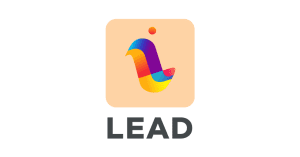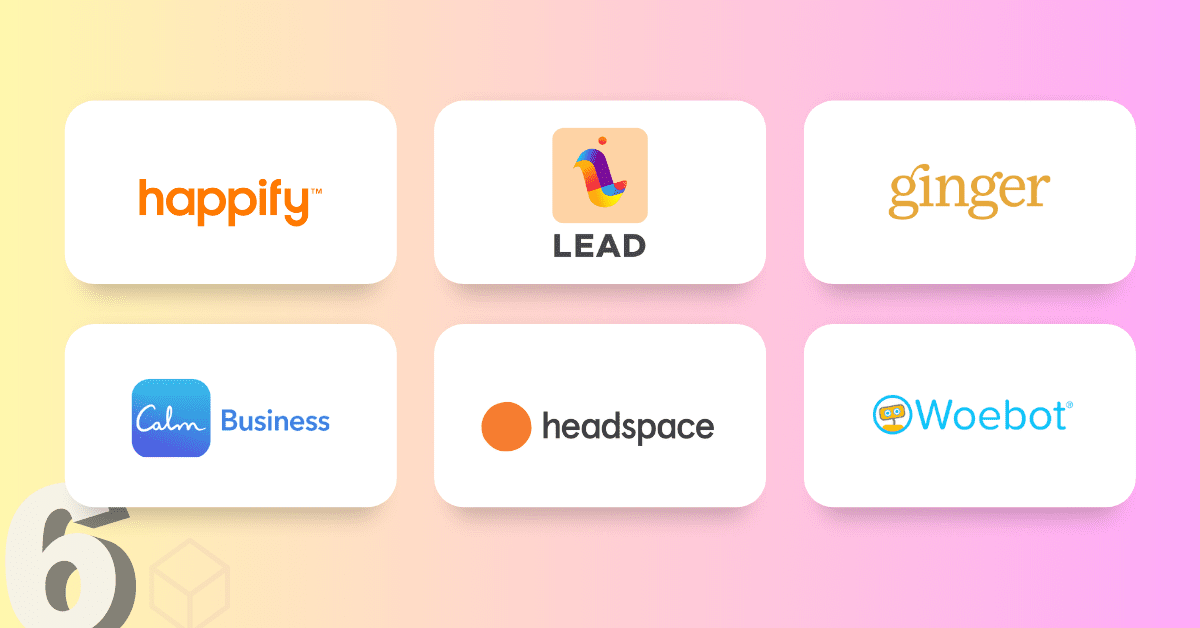Layoffs are an unfortunate but sometimes necessary aspect of running a business, particularly during the pandemic, and can be seen as a strategy to maintain profitability. While the employees who are let go face obvious challenges, the impact of layoffs on the remaining workforce is often overlooked. The ripple effects can be felt across various aspects of the work environment, influencing employee engagement, mental health, retention rates, and ultimately, the organization’s profitability.
Gallup’s research shows that employee engagement is a critical factor in achieving business success. Engaged employees are more likely to be productive, innovative, and committed to the organization’s goals. Forbes also recently published an article called The Paradox Of Layoffs: Engagement Drops When You Need It Most.
In this article, we will explore the consequences of layoffs on the employees who stay with the company and discuss how people managers and human resources can leverage software products to help organizations navigate these challenging times, no matter whether your organization is currently remote work, hybrid, or in the office.

Impact on Employee Engagement, Wellbeing, and Productivity
Layoffs can significantly impact employee engagement for the employees who remain in the company. The effects can be both direct and indirect, influencing various aspects of the work environment. Some of the impacts include:
Fear and job insecurity: Layoffs can create a sense of job insecurity among the remaining employees, who may fear that they could be the next to lose their jobs. This insecurity can lead to stress and anxiety, which can negatively impact employee engagement and productivity.
Decreased morale and motivation: Witnessing colleagues being laid off can be demoralizing for the remaining employees, leading to a decrease in motivation and overall job satisfaction. As a result, engagement levels can drop as employees may no longer feel as committed to the company and its goals.
Increased workload: After layoffs, the remaining employees often have to take on additional responsibilities to cover the work previously done by their former colleagues. This increased workload can lead to burnout, stress, and disengagement. Eventually it hurts the productivity.
Erosion of trust and loyalty: Layoffs can cause employees to question the company’s stability and their own job security. This can erode trust and loyalty towards the organization, resulting in reduced engagement and commitment.
Reduced collaboration and teamwork: The loss of coworkers can disrupt team dynamics and hinder collaboration, as remaining employees may have to build new relationships and adjust to new team structures. This can create challenges in communication and teamwork, further affecting engagement, and productivity.
Loss of organizational knowledge: When employees are laid off, the company loses their knowledge, skills, and expertise. This can impact the remaining employees’ ability to perform their tasks efficiently, leading to frustration, disengagement and loss in productivity.
There are studies that show that employee engagement drops dramatically after layoff events, as well as a strong impact on the remaining employees’ mental health. The relationship between company layoffs, employee engagement, and employee mental healthcare is complex and interrelated. Layoffs can create a challenging work environment that affects not only the individuals who lose their jobs but also those who remain employed with the organization. The consequences of these layoffs can have a significant impact on the overall employee engagement and mental health of the remaining workforce.
When a company undergoes layoffs, the remaining employees often experience increased job insecurity and fear for their future in the organization. This insecurity can lead to stress, anxiety, absenteeism, and decreased morale, all of which negatively impact employee engagement. Engaged employees are more likely to be motivated, committed, and productive, but the uncertainty and instability caused by layoffs can undermine these positive attributes. As a result, the organization may witness a decline in overall job satisfaction, commitment, and performance among the remaining employees.
In addition to affecting employee engagement, layoffs can have a significant impact on the mental health of the remaining employees. The increased workload that often follows layoffs can contribute to burnout, a state of chronic physical and mental exhaustion. Burnout has been linked to various mental health issues such as depression, anxiety, and reduced psychological well-being. Moreover, the erosion of trust and loyalty towards the organization resulting from layoffs can exacerbate feelings of disconnection and isolation, further affecting mental health.
The loss of colleagues due to layoffs can also disrupt team dynamics, hinder collaboration, and negatively impact social support in the workplace. Human resources and managers need to know that social support is a critical factor in protecting employees’ mental health, and a lack of support can lead to higher rates of depression, anxiety, and other mental health problems. In this context, layoffs can create a chain reaction that affects both employee engagement and mental health, resulting in a challenging work environment for the remaining employees.
Impact on Employee Turnover
Layoffs can also have a negative impact on employee retention rates. The extent of the impact on retention may vary depending on the organization, the industry, and the circumstances surrounding the layoffs. While it is difficult to provide a specific percentage range for the drop in employee retention after layoffs, research has shown that layoffs can lead to increased voluntary turnover among the remaining employees.
A study published in the Academy of Management Journal (2002) found that employees who survived a layoff were more likely to leave their organization voluntarily in the years following the downsizing event. The study suggests that layoffs can lead to a “survivor syndrome,” where the remaining employees experience increased stress, job insecurity, and reduced commitment to the organization. These factors can contribute to higher voluntary turnover rates among the remaining workforce.
As a people success software company, we are on a mission to support businesses and their employees. In this article, we will introduce you to six software solutions that can help minimize the negative impact of layoffs on employee performance, engagement, and well-being. These tools can also help you regain a positive workplace culture/company culture.
The First Product: LEAD.bot
 It can play a significant role in supporting organizations and employees during and after layoffs.
It can play a significant role in supporting organizations and employees during and after layoffs.
LEAD.bot can help address the loss of organizational knowledge and reduced collaboration and teamwork that may arise after layoffs. LEAD.bot is seamlessly integrated with popular communication platforms like Microsoft Teams and Slack, allowing for effortless collaboration and increased user engagement, while ensuring that employees can easily access and benefit from its features without disrupting their existing workflow. Unlike Donut for Slack, by leveraging its AI-powered platform and features, LEAD.bot can facilitate knowledge sharing, relationship building, and improved communication among the remaining employees. Here are some ways LEAD.bot can assist:
Cross-Team and Standard Matching: To promote collaboration and teamwork after layoffs, LEAD.bot’s Cross-Team and Standard Matching features can connect employees for virtual coffee pals, coffee chats, speed mentoring, team engagement and company wide Watercooler discussions. These interactions can help employees build new relationships, adjust to new team structures, and share knowledge across the organization. As simple as letting people to find their coffeepals can be a great opportunity to enhance your work culture.
- Use case: LEAD.bot can be set up to match employees from different departments for biweekly Watercooler chats, encouraging the exchange of ideas, best practices, and expertise.
Employee Intros: LEAD.bot’s Employee Intros feature can help acquaint remaining employees with one another, especially if new team structures have been implemented or new hires have been brought on board. By introducing team members, LEAD.bot can promote communication and teamwork, helping to fill knowledge gaps and support effective collaboration. Read more about Why Workplace Friendships and How to Encourage Them here.
- Use case: LEAD.bot can be used to create brief employee profiles, showcasing individuals’ skills, expertise, and interests, enabling team members to identify potential collaborators and experts within the organization.
Pulse Surveys: LEAD.bot’s Pulse Survey feature can help organizations monitor the impact of layoffs on remaining employees, including their ability to collaborate and perform tasks efficiently. By collecting regular feedback, organizations can identify areas where knowledge or support is needed and take action to address these concerns, improve overall employee experience. Read more about How to Use Pulse Survey to Improve Employee Engagement and Company Culture here.
- Use case: LEAD.bot can be configured to send out monthly pulse surveys, assessing employees’ levels of satisfaction with collaboration, communication, and access to organizational knowledge.
New Hire Onboarding: If new hires are brought on board to fill knowledge gaps or replace laid-off employees, LEAD.bot’s New Hire Onboarding feature can help integrate them into the organization and facilitate knowledge transfer between new and existing employees.
- Use case: LEAD.bot can be used to develop a structured onboarding process that includes introductions to key team members, sharing of essential resources, and opportunities for new hires to learn from experienced colleagues for their own professional development.
By utilizing these features, LEAD.bot can support organizations in addressing the challenges of loss of organizational knowledge and reduced collaboration and teamwork after layoffs, ultimately helping to maintain employee engagement and boost productivity.
Apps for Mental Health and Well-being
For companies who want to address employee mental well being, there are five software solutions available (listed below) that focus specifically on mental health and well-being in the workplace. Some of these tools offer resources, training, and support to help employees manage stress, anxiety, and other mental health concerns:
Headspace for Work is a meditation and mindfulness app that provides employees with guided meditation sessions, breathing exercises, mindfulness activities, as well as an employee engagement dashboard to track metrics and measure the impact of their mental health initiatives. The app is designed to help reduce stress, improve focus, and boost overall well-being.
 2. Ginger
2. Ginger
Ginger is a mental health platform that provides employees with access to behavioral health coaching, therapy, and psychiatry services. Through the app, employees can chat with coaches, schedule virtual therapy sessions, and access resources to support their mental well-being. In 2021, Headspace and Ginger merged to form Headspace Health.
Calm for Business offers a program tailored resources and activities for businesses to support employee mental wellness and wellbeing. Its services include guided meditations, sleep stories, and calming music, as well as mental health resources like stress management and resilience training.
 4. Happify
4. Happify
Happify is a mental health app that uses evidence-based techniques from positive psychology and cognitive-behavioral therapy to help employees build resilience and improve their emotional wellbeing. It offers activities and games that are designed to reduce stress and promote positive emotions.
 5. Woebot
5. Woebot
Woebot is an AI-powered chatbot app that uses conversational approach to help employees manage their mental health. It provides a safe space for employees to talk about their feelings and emotions, and exercises to help them identify and challenge negative thought patterns and build healthy habits.
These software solutions and platforms can complement the support provided by tools like LEAD.bot, helping organizations promote employee well-being and address the mental health challenges that may arise after layoffs or other significant workplace changes. While LEAD.bot and the mentioned mental health apps function independently, they can also be used in conjunction with each other to create a more comprehensive employee well-being program. Integrating these apps with LEAD.bot’s programs can help organizations address different aspects of employee engagement, collaboration, and mental health. Here are some suggestions on how the software can put programs engagement and employee wellness programs together:
Cross-promotion and awareness: Organizations can promote the use of mental health apps like Headspace, Calm, Unmind, Lyra Health, or Ginger during LEAD.bot events, such as Watercooler discussions or virtual coffee chats. This can help raise awareness about the available mental health resources and encourage employees to make use of them.
Incorporate mental health topics in Watercooler chats: LEAD.bot’s Watercooler feature can be used to discuss topics related to mental health and well-being. For example, employees can share their experiences using mental health apps, discuss strategies for managing stress, or exchange tips for maintaining a healthy work-life balance.
Onboarding and integration: As part of the onboarding process facilitated by LEAD.bot’s New Hire Onboarding feature, organizations can introduce new employees to the available mental health apps and resources. This can help create a culture of well-being and support from the very beginning of an employee’s tenure.
Pulse surveys and feedback: LEAD.bot’s Pulse Survey feature can be used to gather feedback from employees on the effectiveness of the mental health apps and resources offered. This data can help organizations understand which tools are most beneficial to their employees and make informed decisions about their well-being programs.
Well-being challenges and activities: LEAD.bot can be used to facilitate well-being challenges or activities that incorporate the use of mental health apps. For example, employees can be encouraged to complete a certain number of meditation sessions on Headspace or Calm during a designated time frame or participate in group therapy sessions offered by Lyra Health or Ginger.
By integrating mental health apps into LEAD.bot’s programs, organizations can create a more holistic approach to employee well-being, addressing both the engagement and mental health needs of their workforce.

Conclusion
Layoffs can have far-reaching consequences for the employees who remain in the organization, affecting their engagement, mental health, and overall job satisfaction. By recognizing the potential challenges and utilizing employee engagement & team building software like LEAD.bot, and combined with one or more mental wellness software products, organizations can take proactive steps to mitigate the negative impacts of layoffs and support their employees through these difficult times. By fostering a positive work environment, promoting collaboration and teamwork, and addressing concerns related to job security and mental health, companies can maintain employee engagement and productivity even in the face of workforce reductions. Those efforts can be particularly valuable in navigating challenging times, such as layoffs or other significant workplace changes.
Read more about Layoff impacts: Layoffs in 2023: Why Cutting Vendor Costs Could Worsen the Impact





